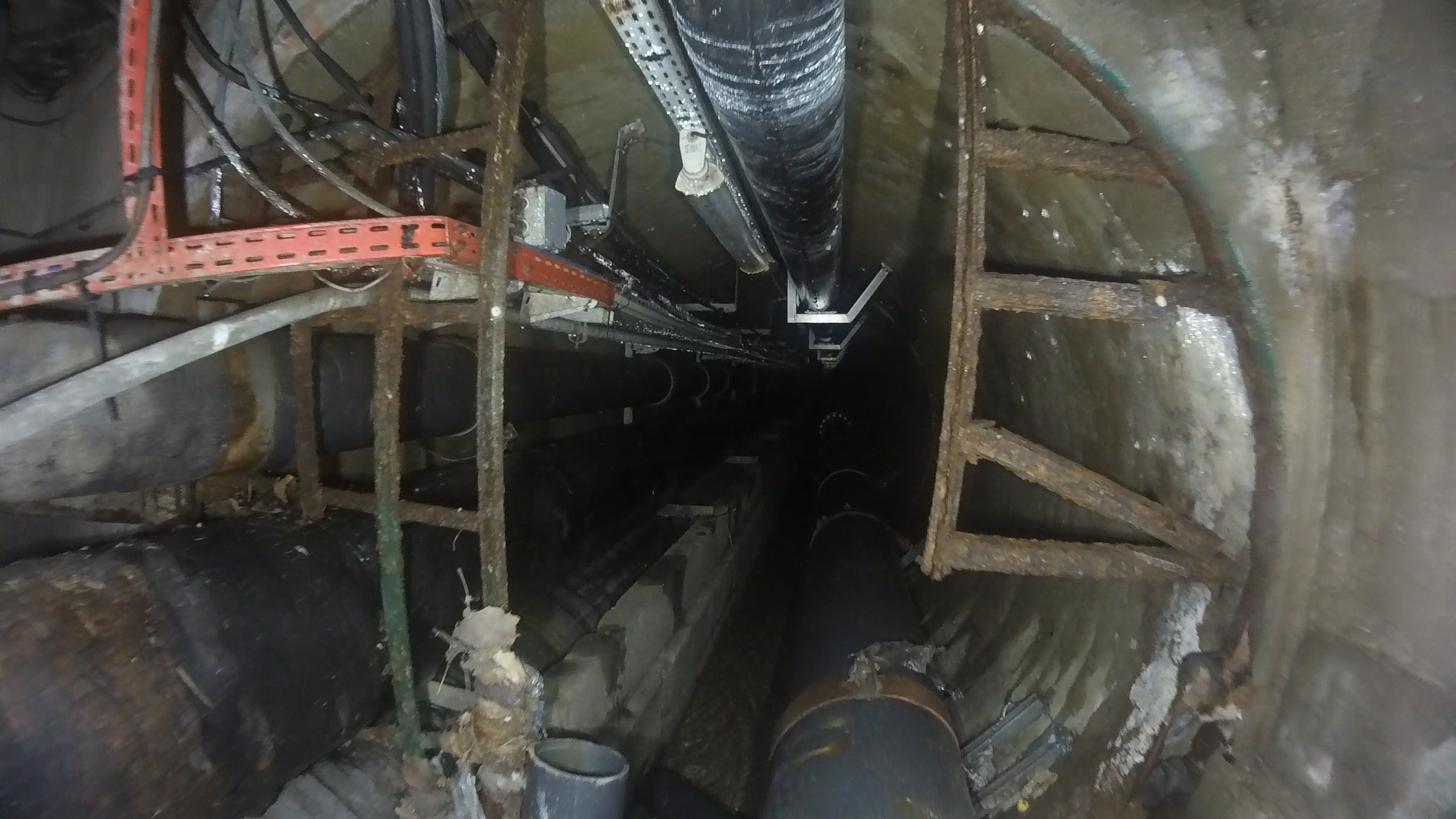/reboot/media/95268e66-9e53-11ed-b306-0242ac14000b/6f5f8ab4-2163-11ee-9dc0-0242ac140002/2-2-confined-space-inspection-by-drone.jpg)
The 3 threats of confined space flight
Flying in confined spaces is often slightly more complex than flying outside. Although Multinnov tends to make indoor inspections as easy as possible, every pilot will face these 3 mains threats at some point:
-obstacles
Unlike outdoor flights, the operations zone is much more restricted. The risk of collision is omnipresent. While the general shape of the structure to be inspected is often easy to control, isolated obstacles such as pole mounted sensors, support beams, or stalactites in natural environments pose a real danger to the machine. It is very important for the pilot to be able to imagine the position of his drone in space at all times.

-darkness
It is rare for an asset to be illuminated for an inspection. You often have to bring lighting on board the drone or with additional spotlights. However, this is an essential component of a visual inspection, since the pilot's ability to locate himself, the machine's ability to stabilize itself automatically, and above all, the relevance of the images that will be used for the report and the decisions that will follow the inspection all depend on the lighting.

-dust or water presence
There most likely be one or both of them present in the inspected asset and each brings its own set of dangers and specific maneuvers.
If water dripping from the ceiling isn’t an issue in itself, the water below the drone can be more dangerous. The air expelled from the propeller can lift droplets and ultimately blind or disturb the stabilization. It is best to keep some altitude even if there are only a few millimeters of water
Dust on the other hand doesn’t represent a threat in itself since the lighting aboard the Stereo2 is made to see through. It is at the pilot’s discretion to notice if dust presence can become problematic at some point and decide accordingly.
The stereo2 is tailor‑made to overcome all these threats as you’ll see in the following video about flying dusty environment in the southern Swiss dams.
:strip_exif()/reboot/media/95268e66-9e53-11ed-b306-0242ac14000b/7e1d7cf8-a2df-11ed-b843-0242ac14000b/1-1-multinnov-pour-fond-blanc.png)
:strip_exif()/reboot/media/95268e66-9e53-11ed-b306-0242ac14000b/7e1d7cf8-a2df-11ed-b843-0242ac14000b/1-1-multinnov-pour-fond-blanc.png)
/reboot/media/95268e66-9e53-11ed-b306-0242ac14000b/7e295d44-1f42-11ef-a184-0242ac120013/2-2-stereo2-inspection-drone.png)
/reboot/media/95268e66-9e53-11ed-b306-0242ac14000b/507e110e-ff96-11ed-95e3-0242ac14000a/2-2-industrial-inspection-by-drone.jpg)
/reboot/media/95268e66-9e53-11ed-b306-0242ac14000b/58f644ac-5628-11ef-83ef-0242ac120012/1-1-p1002011.jpg)